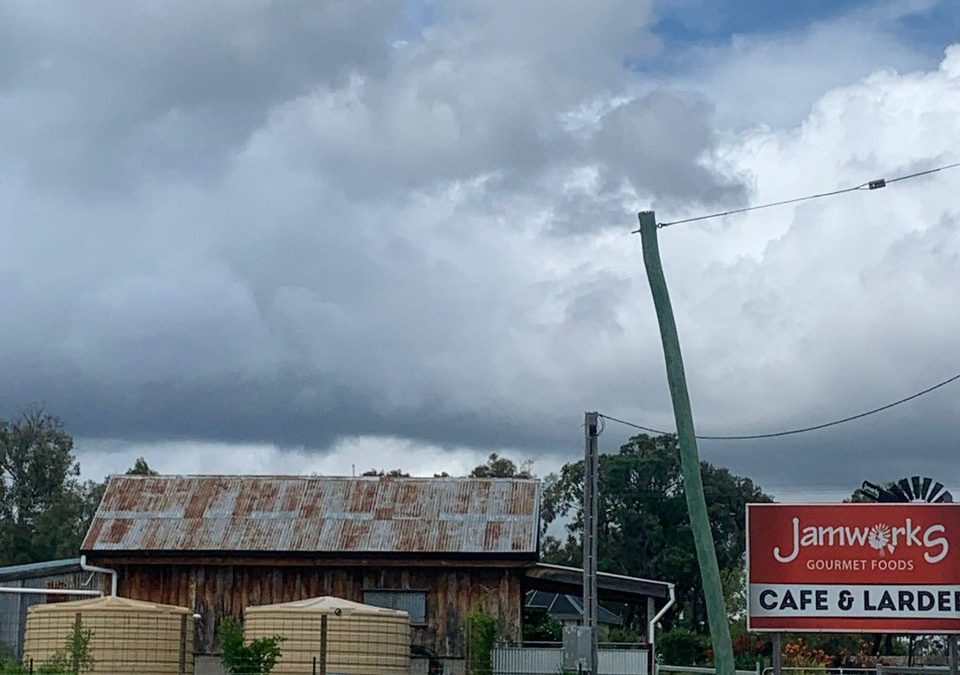If you run a business that operates under Food and Beverage regulations, and you rely on rainwater tanks or ground water, then it is imperative that you have a Water Supply Management Plan in place.
For businesses that offer food and beverage facilities and don’t have access to reticulated water (water mains), you need to be vigilant with your water supply. It only takes a bird dropping, snake, possum or other animal, or chemical spray drift from the local farms, to taint your water supply. These pathogens could cause illness to you or your patrons.
Giardia, Cryptosporidium and E.Coli are common waterborne gastroenteritis which can cause outbreaks that can have a detrimental impact on your business.
Everyone is entitled to crisp, clean, fresh water!
Those of us who live on tank water, love the fact that we don’t have the taste of Chlorine, or other added chemicals. When we travel into town, we can tell the difference in the water quality immediately.
Our rural cafes, restaurants, B&B’s and hotels have a unique opportunity to strip away the toxicity of the city and provide quality natural drinking water.
According to the Food Safety Standard 3.2.3, potable water must be used that is acceptable for human consumption. What is potable water? It simply means water that is safe to drink or use for food preparation. No matter what the source.
Situations where Potable water in a Food environment is used:
- Washing Food or ingredients
- Adding to Food and Drinks
- Cooking
- Making Ice
- Cleaning food containers and utensils
- Cleaning food contact surfaces
If at any time your water supply becomes contaminated, the spread of potential gastro problems can be quick and devastating.
Do you have a Water Supply Management Plan?
These are 4 major steps that you can implement in your Water Supply Management Plan:
- Identify health risks
- Implement preventative measures
- Implement treatment methods
- Establish monitoring procedures.
For more information go to: https://www.health.nsw.gov.au/environment/water/Documents/wsmp.pdf
Practical Solutions
Regular maintenance of your water tanks, using simple preventative measures and adopting proper treatment methods will ensure your water supply is the best it can be. These include:
Regular Cleaning and Sanitising of your Water Storage (Tank)
Sediment builds up over time. Each time it rains, dust and dirt (as well as bird/animal faeces) are washed into your tanks. This builds up and requires removal.
At Pristine Water Systems, we remove sludge off the bottom of your tank with minimal water loss. Our Water Sanitiser (AqueousPro™ 50) will destroy all bacteria and viruses in your water, through the pipework and through to your taps. The active ingredients naturally break down to oxygen and water.
Water Sanitiser should be applied in water tanks that are free of organic material, and reapplied when tanks are filled (either from rain or deliberate refilling).
EnHealth (The Australian Government Department of Health), recommends water tanks are cleaned at least every 2 to 3 years. This can also depend on the quality of your water supply, which means tanks may require servicing more regularly.
Clean gutters & first flush systems
Prolonging the need to have your tank cleaned with regular maintenance around your tank can help reduce the potential for contamination.
Ensure your gutters are clear of leaves and debris. Even if you are using some type of gutter guard, as smaller organic material will still decompose if not removed. Regularly inspect and clear the inlet tank screens from leaves and debris.
First Flush Systems can be fitted. These divert the first amount of water (and debris) that will come off your roof. But you still need to manually check and clear first flush systems. Stagnant water can sit in these for long periods of time.
Install a Filtration and Ultraviolet system
There is no doubting the fact that a quality filter and an UltraViolet system is the penultimate of tools to ensure you have bacteria and virus free water.
There are many different varieties and sizes of filters available for specific situations. Some filters remove sediment, some remove chemicals, some remove bad tastes and odours.
The type of filter you need should be considered based on what your water source is and for what purpose you are using the water.
But filters alone cannot remove all bacteria and waterborne viruses. This is where a professionally installed Ultraviolet Filtration system has you covered.
Ultraviolet systems use UV light to kill bacteria. Much like the sun, a UV system can destroy micro-organisms without introducing chemicals. Water passes through the steriliser unit where bacteria, viruses, algae, protozoa, parasites and mould are exposed to an intense dose of ultraviolet light. This ‘inactivates’ the unwanted organisms.
Combining quality filtration with an Ultraviolet system will mean you have year round perfect water, and reduce the risk that your customers may fall ill due to unwanted parasites in your water supply.
www1.health.gov.au/internet/publications/publishing.nsf/Content/ohp-enhealth-raintank-cnt-l~ohp-enhealth-raintank-cnt-l-6
Looking for a water filtration system or replacement filters?
Pristine Water Systems looks after your water management, from the tank through to your taps.
We have a wide range of popular water filtration, ultraviolet sterilisation and replacement filter cartridges and parts. Our expert water technicians can help you select the right filter for your situation.
Visit our shop to view our range


